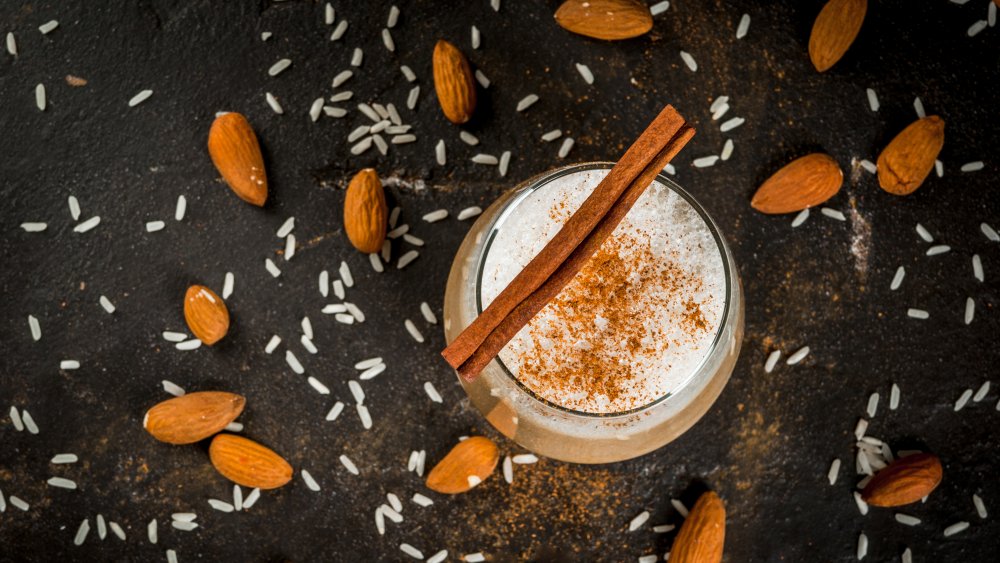The Surprising Origin Of Horchata
When first tasting the horchata it's natural to assume the creamy, sweet, cinnamony beverage has its roots in Mexico. After all, these non-dairy rice- or almond-based beverages flavored with sugar and spices are commonly served at authentic Mexican restaurants and taquerias, and they are the perfect, cool accompaniment to a plate of fiery tacos.
The delicious Mexican horchata dates back to the 16th century (via Atlas Obscura), but there are even older versions. In fact, the term "horchata" describes a group of related drinks with roots in ancient Rome and North Africa. The Romans' version was not based on rice or nuts, but on barley, which for a time was believed to possess curative properties. The Romans "milked" dried barley in water (via Tipples, Book One) to form the basis for the drink they called "hordeata," which literally means "drink made from barley."
A Spanish version of the drink used tiger nuts, which the Moors brought from North Africa after they conquered parts of Spain. The "tiger nut" is actually the chufa, a tuber with a sweet, nutty flavor similar to coconut (via Food & Nutrition). Legend has it that the Valencian name for the beverage, "orxata," stemmed from 13th-century King James of Aragon. Upon tasting it, he is said to have exclaimed, "Açò no es llet, açò és or, xata!" which basically translates to "This is not milk, it's gold, girl!" (via Spanish School Valencia).
Horchata crosses the Atlantic
As both the Roman and North African versions of horchata de chufa made their way around Europe, different cultures adapted the horchata using different grains, nuts, and seeds. Hispano-Arabs in Spain regularly drank a combination of soaked and ground tiger nuts with sugar, cinnamon, and lemon rind, writes Atlas Obscura. Not surprisingly, when 16th-century Spanish conquistadors arrived in the New World, they brought with them many things from home, including rice, sugarcane, and cinnamon. They did not, however, bring an original key ingredient for horchata, the chufa. So the early settlers used rice.
Today, the Mexican and Guatemalan versions of horchata still use rice as well as cinnamon and typically vanilla (via Latin Post). Americans are most familiar with Mexico's variant. In the U.S. and Mexico, you can even find ready-made or powdered versions of horchata in the grocery store. Over the centuries, Latin American countries have developed their own variations. Southern Honduras and El Salvador commonly use morro seeds to create a milky base instead of rice. This version also incorporates tiger nuts, peanuts, almonds, and cashews. In other parts of Honduras and Nicaragua, horcata as semilia de jacaro contains jicaro seeds, rice, and spices. With roots in the ancient world, the history of the horchata proves the adage, "There's nothing new under the sun." It also reminds us that food is one of the threads tying together seemingly disparate and far-flung cultures.

